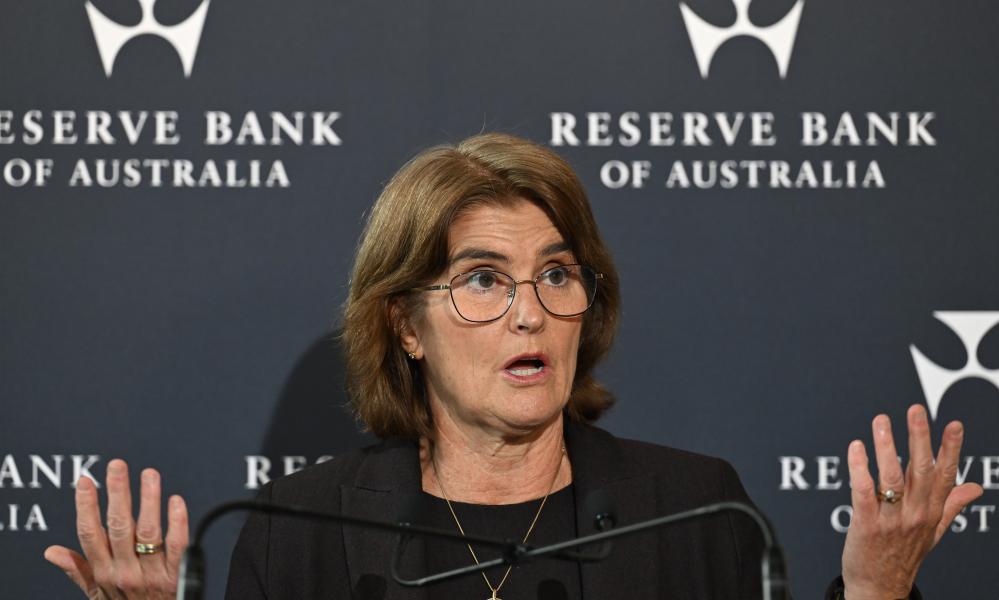
LOW INFLATION TARGETING IS SUCH A DUBIOUS IDEA. WHY DID THE RESERVE BANK ADOPT IT IN THE FIRST PLACE?
The release of recent data suggesting that inflation appears to be stuck at 4%, above the Reserve Bank of Australia’s target range of 2% to 3%, has raised plenty of concern among economic and political commentators. These commentators might be surprised to learn that many, perhaps most, macroeconomists who have looked at the question have concluded that a 4% inflation rate would be the ideal target, at least providing that wages and other incomes kept pace.
The underlying reasoning is simple. Interest rates are the main tool of monetary policy. In a deep recession such as that following the global financial crisis, or in an emergency such as that created by the Covid-19 pandemic, it is desirable that the interest rate should be well below the rate of inflation. That is, the real interest rate, adjusted for inflation, should be negative.
Related: Can Australia’s borrowers dodge another interest rate hike? We’ll know more soon
But if the rate of inflation is too low, this policy is limited by the fact that interest rates can’t go below zero. Well, not much below – the European Central Bank cut its policy rate to -0.5% for several years, relying on the fact that banks could take a cut in their margins, while still charging positive interest rates to borrowers.
Once the zero lower bound for interest rates is reached, central banks are forced to rely on direct purchases of bonds and other securities. This policy, variously referred to as “quantitative easing”, “open market operations” or, less politely, “printing money” worked to prevent economic collapse, but created plenty of problems.
The majority of US economists in a 2017 survey agreed that a higher inflation target would enhance the ability of central banks to stimulate the economy during a recession. By contrast, there is no consensus on whether a 4% inflation rate would have any significant effect on the economic welfare of households.
If a low inflation target is such a dubious idea, why was it adopted in the first place? The answer, surprisingly enough, comes from New Zealand. The first central bank to adopt an inflation target was the Reserve Bank of New Zealand in 1989. The policy was introduced by the then Reserve Bank governor, Don Brash, later to reinvent himself as a rightwing (and then far-right) politician. Brash was backed by then finance minister, Roger Douglas, whose political career followed a similar trajectory.
A range of 0% to 2% was picked, without any theoretical basis, as the lowest that could plausibly be pursued. As Douglas said later, “I just announced it was gonna be 2%, and it sort of stuck.” While the NZ central bank was the first to adopt a 2% inflation target, others were quick to follow. The most important shift was by the US Federal Reserve, which also chose a 2% target, while initially avoiding a public commitment.
At the time, New Zealand was seen as being a star performer in economic reform, likely to overtake Australia in a matter of years. Even among those who did not share in the enthusiasm, it seemed reasonable to assume that, as it had done for most of the 20th century, New Zealand would maintain living standards similar to those in Australia.
In reality, though, New Zealand’s economic performance has been miserable. Income per person is below the Australian level. Net emigration to Australia (currently running at around 20,000 per year) reflects the higher wages and living standards available here.
While many explanations have been offered for New Zealand’s relative decline, the simplest is that of repeated failures in macroeconomic management. New Zealand has experienced a string of recessions since the adoption of inflation targeting, mostly reflecting excessively rigid application of tight monetary policy. Contrary to the idea of a recession as a temporary disruption, these recessions (particularly that of the early 1990s and the global financial crisis) seem to have shifted the country onto a permanently lower growth path.
Elsewhere, inflation targeting worked reasonably well until the GFC. But in the long period of depressed activity that followed, central bank interest rates were stuck at or near zero. Despite this failure, central banks retained the power and prestige they had attained in the early days of inflation targeting. Unsurprisingly, they have been highly resistant to any change to inflation targets, even though they have no convincing defence of the status quo. Instead, they rely on the fact that any change would be bad for faith in the central banks.
The recent review of the RBA spells this out. After conceding the strength of arguments for a higher inflation target, the review panel concluded: “Regardless of the merits of higher inflation in general, the Review does not recommend increasing the inflation target during the present period of high inflation. To do so could undermine the credibility of the RBA in responding to future periods of above-target inflation.”
Of course, once we have ground our way back down to the target, the idea of raising it will be dismissed; it would be throwing away costly gains.
So, if you are struggling with higher interest rates or worried about higher unemployment, remember that this is the price we have to pay to restore the “credibility” of the Reserve Bank.
John Quiggin is a professor at the University of Queensland’s school of economics
